- Home
- James A. Michener
Caribbean
Caribbean Read online
Caribbean is a work of historical fiction. Apart from the well-known actual people, events, and locales that figure in the narrative all names, characters, places, and incidents are the products of the author’s imagination or are used fictitiously. Any resemblance to current events or locales, or to living persons, is entirely coincidental.
2014 Random House eBook Edition
Copyright © 1989 by James A. Michener
Cartography copyright © 1989 by Jean Paul Tremblay
Illustrations copyright © 1989 by Franca Nucci Haynes
All rights reserved.
Published in the United States by Random House, an imprint of The Random House Publishing Group, a division of Random House LLC, A Penguin Random House Company, New York.
RANDOM HOUSE and the HOUSE colophon are registered trademarks of Random House LLC.
Originally published in hardcover in the United States by Random House, an imprint of The Random House Publishing Group, a division of Random House LLC, in 1989.
eBook ISBN 978-0-8041-5153-5
www.atrandom.com
v3.1
This book is dedicated
to the gentle memory
of
ALEC WAUGH
who told me when we were working
together in Hawaii in 1959
‘Someday you must write about my
Caribbean.’
FACT AND FICTION
Though it is based on fact, this novel uses fictional events, places and characters. The following paragraphs endeavor to clarify which is which.
I. Croton. The peaceful Arawaks were overrun by the warrior Caribs at about the time indicated. There is historical evidence for the life of the two tribes as portrayed. All characters are fictional.
II. Maya. Tulúm, Cozumel, Chichén Itzá and Palenque are historic sites accurately portrayed. All characters are fictional.
III. Columbus. Cristóbal Colón, King Ferdinand, Francisco de Bobadilla and the heroic canoeist Diego Méndez are historic characters; all others are fictional. Colón was heavily investigated and was sent home a prisoner.
IV. Spanish Lake. Sir John Hawkins and Sir Francis Drake are historic, as is Viceroy Martín Enriquez, their Spanish adversary at San Juan de Ulúa. All other Spanish characters are fictional. The exploits of Drake are accurately summarized.
V. Barbados. Lord Francis Willoughby, Sir George Ayscue and Prince Rupert are historic, all others are fictional. The various events are historic and are accurately presented.
VI. Buccaneers. Henry Morgan and his various raids are historic and are accurately portrayed. All other characters are fictional. The circumnavigation of South America occurred, but with real buccaneers and in about the same route and elapsed time as given.
VII. Sugar. Admiral Edward Vernon, General Thomas Wentworth and the Spanish naval hero Don Blas de Lezo are historic, and their confrontation at Cartagena is accurately portrayed. The great Beckford and Dawkins planter families are accurately depicted. William Pitt (the Elder) is historic, as were the Danish rules for disciplining slaves. All other characters are fictional.
VIII. Nelson. Horatio Nelson, Admiral Sir Edward Hughes and Mrs. Nisbet are historic. All others are fictional, but everything said about Nelson and his frantic search for a wealthy wife is based on fact.
IX. Guadeloupe. Victor Hugues was a real man, but while sources agree on his behavior during the French Revolution, both in France and in the islands, they vary as to his early years. Some deny that he had ever been a barber in Haiti. All other characters are fictional, but the grisly events in Guadeloupe are historic and Hugues did die a strong reactionary in responsible office.
X. Haiti. The black General Toussaint L’Ouverture, Napoleon’s General Charles Le Clerc and his wife Pauline Bonaparte, the English General Thomas Maitland and the black voodoo leader Boukman are all historic, as was the ill-fated Polish battalion. All other characters are fictional, but the various swings of war and the ultimate black victory are accurately described.
XI. Martial Law in Jamaica. Only the two plantation owners, Jason Pembroke and Oliver Croome, are fictional. Governor Edward John Eyre and all others are historic, especially the leaders of the debate in London: Tennyson and Carlyle of the pro-Eyre forces, Mill of the antis. Their attitudes are reported accurately. The actions of the two murderous martial-law enforcers, Hobbs and Ramsay, are historic, including their suicides. The ugly opinions of Carlyle can be found in his writings.
XII. Letters at All Saints. The island itself is purely fictional, a composite of several real places. All characters are fictional, except that the great black cricketer Sir Benny Castain is based upon four real black athletes of considerable fame.
XIII. Trinidad Scholar. The events and the characters who participate in them are totally fictional, but the two universities, West Indies and Miami, are faithfully presented. Events relating to the fraudulent marriage were verified by Immigration authorities and represent common practice.
XIV. Rasta Man. All events and characters are fictional, but the characteristics of the Rastafarian and his religion are based on careful study and interviews.
XV. Cuba. Fidel Castro is historic. All other characters are fictional, but none are exaggerated. Data on life in Miami and Havana are authentic, but the interview with Castro is based on reports of others.
XVI. Final Tour. Thérèse Vaval is totally fictional, as are her ship the Galante and the cruise it makes and the characters she encounters. But some ten or a dozen ships like hers leave Miami or San Juan weekly for island routes that are markedly similar except that they do not visit Trinidad. The general conditions she finds can be easily duplicated and her conclusions are shared by many.
CONTENTS
Cover
Title Page
Copyright
Dedication
Fact and Fiction
Map
I. A HEDGE OF CROTON
II. DEATH OF GREATNESS
III. CHRISTOPHER COLUMBUS IN HISPANIOLA
IV. THE SPANISH LAKE
V. BIG STORMS IN LITTLE ENGLAND
VI. THE BUCCANEER
VII. THE SUGAR INTEREST
VIII. A WEDDING ON NEVIS
IX. THE CREOLES
X. THE TORTURED LAND
XI. MARTIAL LAW
XII. LETTERS OF INTRODUCTION
XIII. THE SCHOLAR
XIV. THE RASTA MAN
XV. TWINS
XVI. THE GOLDEN SEA
Further Reading
The Setting
Other Books by This Author
About the Author
THE CHIEF CHARACTER in this narrative is the Caribbean Sea, one of the world’s most alluring bodies of water, a rare gem among the oceans, defined by the islands that form a chain of lovely jewels to the north and east. Although bounded on the south and west by continental land masses, it is the islands that give the Caribbean its unique charm. On the north lies the large and important trio: Puerto Rico, Hispaniola (Haiti and the Dominican Republic) and great Cuba. On the east are those heavenly small islands that so artistically dot the blue waves: Antigua, Guadeloupe, Martinique, All Saints, Trinidad and remote Barbados among them. The southern shore is formed by the South American countries of Venezuela and Colombia and the Central American nation of Panamá. The western shore is often overlooked, but it contains both the exciting republics of Central America—Costa Rica, Nicaragua and Honduras—and the wonderful, mysterious peninsula of Yucatán where the ancient Maya flourished.
The Caribbean, nearly nineteen hundred miles wide from Barbados to Yucatán, does not include either the Bahama Islands or Florida, but does contain near its center an island which at intervals assumed an importance greater than most of the others, Jamaica with its turbulent history.
In the centuries following its discovery by Columbus in 1492, the Caribbean was dominated by European nations fascinated by its wealth, its inviting charm and its strategic importance in naval warfare. Spain, Holland, England, France and, at brief intervals, Denmark and Sweden all became embroiled in Caribbean affairs, until it seemed that the area’s destiny was determined not by actions in the Caribbean but by what transpired in Europe. Conversely, and this became a crucial factor in world history, European destinies were frequently determined by great sea battles in the Caribbean, especially those fought among the fleets of Spain, Holland, England and France.
But one must always keep in mind the salient fact about this sea and its islands: the dominant settlers of the area would become the black slaves who arrived in such droves from Africa that in time they outnumbered and eventually outpowered all other groups combined. Many islands would ultimately become black republics with blacks holding all major offices like governor general, prime minister and chief of police.
In the nineteenth century a heavy influx of Hindus and Muslims from India introduced unique influences, making certain islands and regions even more colorful, while in recent decades businessmen predominantly from Canada and the United States have streamed down to invest their intelligence and money in efforts to make the islands tourist havens and international banking centers.
The Caribbean is often referred to erroneously as the Mediterranean of America. In a strictly geographical sense the comparison is apt: both seas are landbound, they are almost identical in size (Mediterranean, 969,100 square miles; Caribbean, 971,400). Both have been important historically, but there the similarities between the two great seas end. The lands bordering the Mediterranean gave rise to many outstanding civilizations and the three great relig
ions, while the only great indigenous civilization that operated in the Caribbean area was the Maya in Yucatán, and even it was dying out before the explorers arrived from Europe.
But what the Caribbean did provide, and generously, was a sea of heavenly beauty, a cluster of unmatched islands and a varied series of national occupiers; it certainly has never lacked for either variety or excitement. Above all, it was the theater for one of nature’s most violent manifestations, the vast hurricanes that were spawned mysteriously off the shores of Africa and came roaring across the South Atlantic with demonic fury. Each summer a gathering of these monsters rampaged among the islands, sometimes missing land entirely, in other years devastating everything, flattening palm trees, tearing houses apart, and killing thousands. The hurricanes kept to a preordained swath, rarely striking as far south as Trinidad or Cartagena, occasionally as far north as Bermuda, but Barbados and Jamaica could expect to be visited at least once in a decade, and some smaller islands were ravaged with even greater frequency. Sunny beaches of white sand and crystal-blue water were the glory of the Caribbean, hurricanes the hell.
But however magnificent the sea is, the stories of human endeavor must focus on the scattered islands, just as in the larger world, history concentrates on the settled continents. We have neither the time nor space to deal with all the islands, each worthy of its own treatment, but we shall visit in close detail more than a dozen, and in the process observe many diverse civilizations dominated by a wide variety of mother nations: Spain, Holland, England, France, Denmark, the United States, and the societies unrelated to Europe: Arawak, Carib, Maya, African, East Indian. It is a rich tapestry we shall be inspecting.
The story begins in the year 1310 on an island—which would later be named Dominica—lying in the middle of the eastern arc.
Tiwánee suspected there might be trouble as soon as she heard that strangers had settled on the other side of the island. She learned this disturbing news from the most reliable man in the Arawak settlement, her mate Bakámu, who on one of his constant roamings had espied the three strange canoes from the top of a hill where he was digging for an agouti. The canoes were much larger than those familiar to the island, and the people taller and darker-skinned.
Forgetting his pursuit of the agouti, which had burrowed deeper than usual, he ran back across the island, beneath the branches of the tall clustering trees that covered the hills, to shout to his woman: ‘They have come.’
These words summarized a world of mystery and apprehension, for never before had strangers come to the island, nor was there any conceivable way in which Bakámu could have known that they were coming, or even that they existed elsewhere. But Bakámu was not an ordinary man, as his name testified—it meant he has struggled back—and it was well earned, for as a young fellow, still bearing his birth name Marabul, he had hollowed out a huge log, made himself a stout canoe, and in it had paddled bravely to other islands not seen before. To the north he went over open seas to the island that would centuries after his death be named Guadeloupe and to the south he visited Martinique, discovering that his smaller island lay between two larger ones which seemed to be uninhabited.
He had pondered the mystery of why his small island contained people, while its larger neighbors had none, but could find no answer, and talked with no one about it. He kept his silence even after he took Tiwánee as his wife to live with him in the shelter he had built for them. She has great wisdom, he thought, and someday I will tell her. But now Bakámu was caught up in the discovery that his wife had accumulated rare knowledge, and better than other women, she knew when to plant manioc and sweet potato, how to cultivate corn, and where in the forest she could find star apples, guava and especially the rich, sweet cashew nut. And when her man brought home an iguana, once or twice a year, she knew how to prepare the first joyous feast and then dry the rest of the meat and save it for later.
Tiwánee’s skills were respected by all in the village, and they formed one of the most attractive couples on the sunset side, he a man of robust build and somewhat ponderous, she a darting little brown bird looking into everything. Since he demonstrated unusual ability in whatever physical activity he attempted—running, leaping, swimming, games—he commanded the respect of his fellows and in public his words carried weight, but everyone knew that in the home he listened to and obeyed his wife. Although men did not consider her beautiful, the wonderful animation of her pert little face when she talked or smiled attracted special attention. And when they walked together along the beach or through the village, Tiwánee in her brightly colored garment, Bakámu in a dun-colored breechclout, she invariably stayed in front, as if she with her rapidly scanning eyes and natural inquisitiveness was scouting the way for him. But regardless of where they were or what they were doing, they laughed a lot, and it was clear to all that they were happily mated.
It was easy to determine where Bakámu and his wife lived, for although their round hut built of wooden poles, wattles and mud resembled all others clustered in friendly circles, the plot of land on which it stood was outlined by a remarkable hedge which glowed when sunlight reflected from it.
When planting it, Tiwánee had used only the croton, a tropic plant which produced in its big, broad leaves a variety of colors that was bedazzling. There were reds, yellows, blues, purple, deep brown and four or five other colors, all dusted with iridescent specks of gold. Some plants, for no discernible reason, had leaves of all one color, others displayed the wildest variations, and occasionally, as if to prove its versatility, the same plant would produce one bright color topside of each leaf, a much darker color on the underside.
A hedge of croton was a perpetual bewilderment and joy, because the individual plants were a rowdy lot; they grew in wild profusion, obedient to none of the sensible laws that governed ordinary plants. Had Tiwánee used in her hedge any of the glorious red flowers her village produced—those that would later be called poinsettias, anthuriums or hibiscus—she would have had a known quantity; those flowering shrubs grew to a preordained height, behaved themselves, and clung together as if ruled by only one benelovent spirit: ‘You were intended to be thus and so you will remain, to gladden men’s eyes.’
But croton was an outlaw. Again and again Tiwánee would trim her hedge all of a level and then one morning she would find that two of her plants had taken off like seabirds leaving the bay to soar aloft. They would grow like determined little trees, until they were so out of proportion that she had to eliminate them, for they ruined her hedge. Or again, she would have in one section of her planting crotons of one color, perhaps all yellow, a gorgeous plant, when out of nowhere would spring up one that became a dark purple, and again her design was destroyed.
No one could make a bunch of croton behave, not in size, or color, or general appearance. The most irritating behavior of all was when some especially beautiful plant, showing perhaps a combination of four colors, would suddenly stop growing upward and decide to grow with great proliferation sideways, its leaves becoming ever more glorious as its form degenerated.
One evening as Tiwánee sat with her husband in the sunset glow, surveying her lovely but unruly croton hedge, she told Bakámu: ‘This is the plant closest to people. It can be anything, tall or short, this color or that, bright or dark. You can’t make it obey, for it lives by its own rules, but if you let it have its own way, it can be glorious. Look over there!’ And they studied a splendid stretch of hedge in which all the plants were of the same size and color, a scintillating red, all that is except one in the middle which ruined the whole display: it was a garish purple, two times taller than any other and determined to grow higher.
‘That one reminds me of you,’ she said, ‘going your own way.’
She was right in thinking that Bakámu acted according to his own rules, and when he finally shared with her his knowledge of the other islands he had discovered, she snapped: ‘You should have told me sooner. Doesn’t it stand to reason? If we’re here, won’t someone else be there?’ Most earnestly she wanted to go back with him to inspect those lands more closely, but that, of course, was impossible, for if any woman touched Bakámu’s special canoe, which had the form of a man’s genitals, he believed she would destroy its magic, and were she actually to get into the canoe for a voyage, that exploration would surely end in disaster.

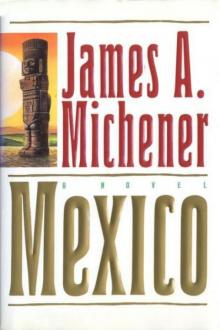 Mexico
Mexico The World Is My Home: A Memoir
The World Is My Home: A Memoir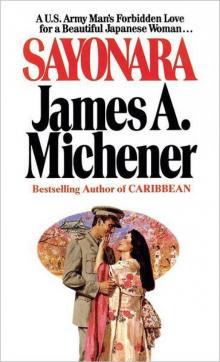 Sayonara
Sayonara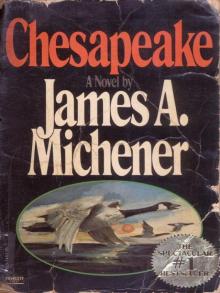 Chesapeake
Chesapeake The Novel
The Novel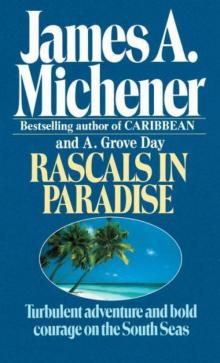 Rascals in Paradise
Rascals in Paradise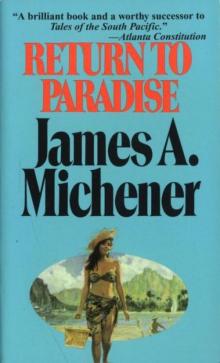 Return to Paradise
Return to Paradise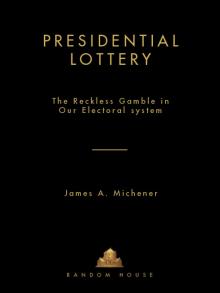 Presidential Lottery: The Reckless Gamble in Our Electoral System
Presidential Lottery: The Reckless Gamble in Our Electoral System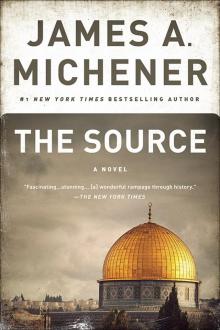 The Source
The Source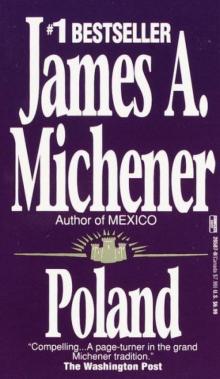 Poland
Poland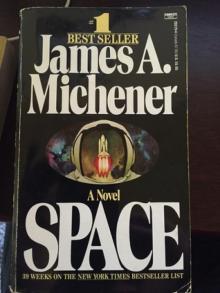 Space
Space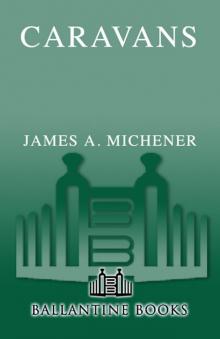 Caravans
Caravans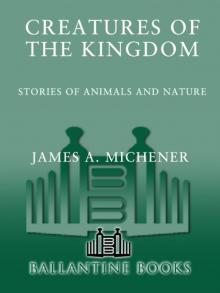 Creatures of the Kingdom: Stories of Animals and Nature
Creatures of the Kingdom: Stories of Animals and Nature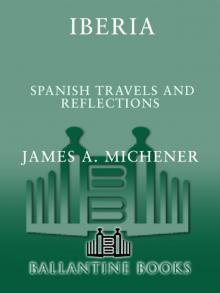 Iberia
Iberia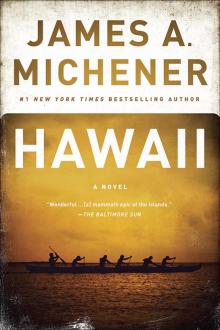 Hawaii
Hawaii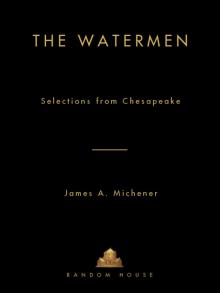 The Watermen: Selections From Chesapeake
The Watermen: Selections From Chesapeake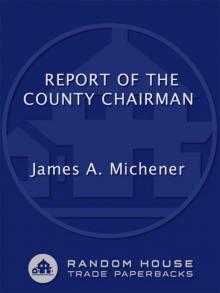 Report of the County Chairman
Report of the County Chairman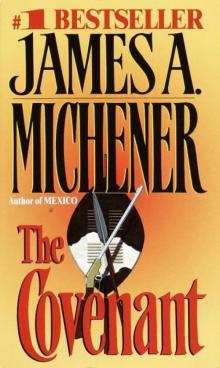 The Covenant
The Covenant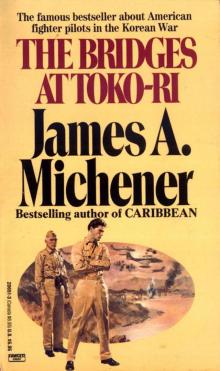 The Bridges at Toko-ri
The Bridges at Toko-ri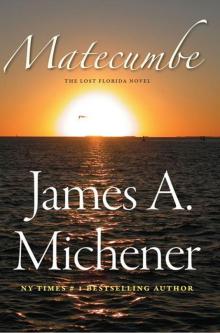 Matecumbe
Matecumbe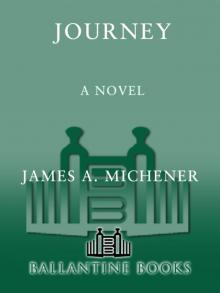 Journey: A Novel
Journey: A Novel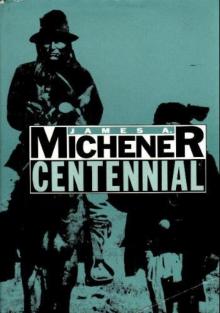 Centennial
Centennial Sports in America
Sports in America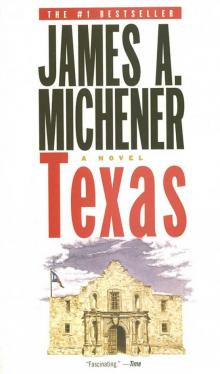 Texas
Texas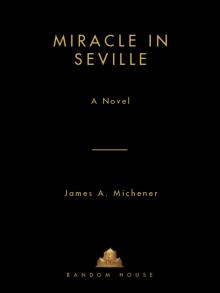 Miracle in Seville
Miracle in Seville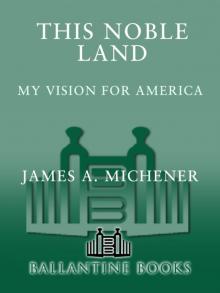 This Noble Land: My Vision for America
This Noble Land: My Vision for America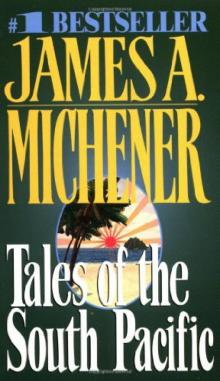 Tales of the South Pacific
Tales of the South Pacific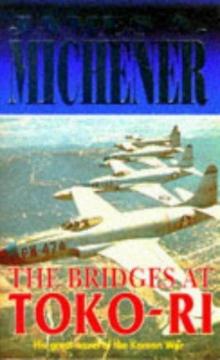 Bridges at Toko-Ri
Bridges at Toko-Ri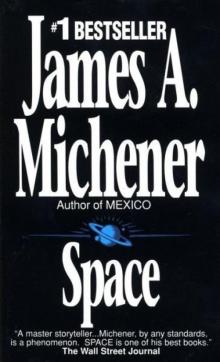 Space: A Novel
Space: A Novel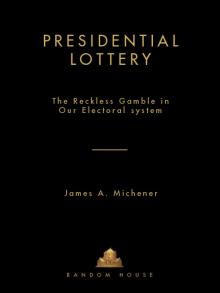 Presidential Lottery
Presidential Lottery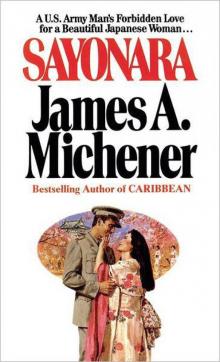 Sayonara: A Novel
Sayonara: A Novel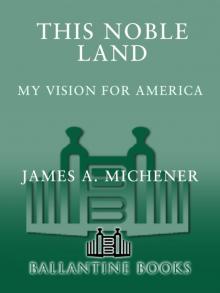 This Noble Land
This Noble Land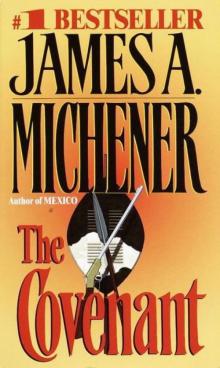 The Covenant: A Novel
The Covenant: A Novel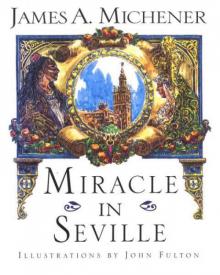 Miracle in Seville: A Novel
Miracle in Seville: A Novel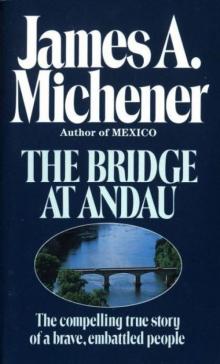 The Bridge at Andau
The Bridge at Andau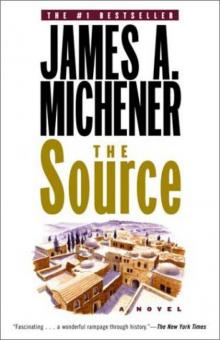 Source
Source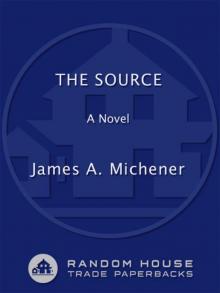 The Source: A Novel
The Source: A Novel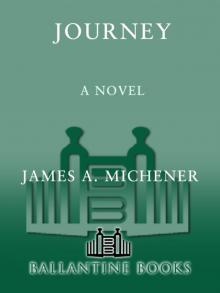 Journey
Journey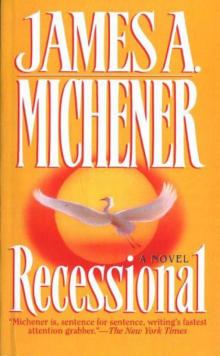 Recessional: A Novel
Recessional: A Novel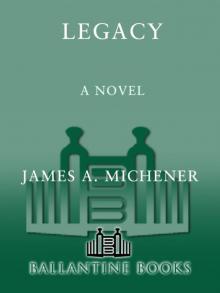 Legacy: A Novel
Legacy: A Novel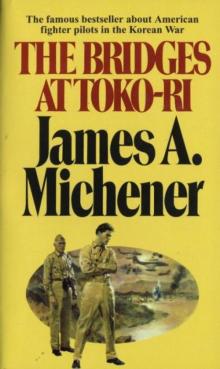 The Bridges at Toko-Ri: A Novel
The Bridges at Toko-Ri: A Novel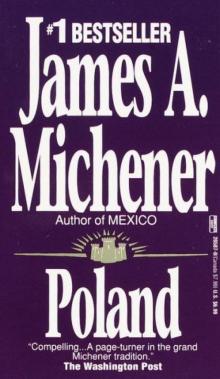 Poland: A Novel
Poland: A Novel